
The first aid sign is a symbol we look for when we or someone we know needs immediate medical assistance. But what may be familiar in our home country may be totally different in another country.
Can you identify the first aid sign, say, in the USA or Africa? And do you know the history of the first aid signs? No? Well, read on to gain some new knowledge.
Why Is First Aid Important?
First aid saves lives. Thousands of people die each year in situations where first aid care could have made a life-changing difference.
According to a survey by the British Red Cross, only 5% of UK adults feel confident enough to help someone if they are bleeding heavily or unresponsive. This means most adults won’t be able to save a life using first aid.
However, it doesn’t have to be this way. Good first-aid courses are easy to follow and packed with lifesaving information. But this is all wasted if people are not confident to use their first aid skills in life-critical situations.
The History of First Aid
There’s no one period in history we can pinpoint as the birth of first aid. But archaeologists confirm that helping our fellow man or woman was done as far back as Egyptian times. Now, this seems like a good starting point. After all, the Egyptians are known for their brilliant bandaging skills.
Not far behind were the Greeks. They depicted bandaging techniques they learnt from the Egyptians in their pottery.
But, it was the Roman Army that cemented first aid techniques. During battles, they set up field hospitals and had makeshift ambulances and surgeons ready and waiting for wounded fighters.
French surgeon and military doctor Baron Dominique Jean Larrey created the first ambulance corps during the French Revolution and the Napoleonic Wars. His corps comprised a large team of field surgeons with supplies, carriages, stretchers and more.
The British soon adopted the pioneering techniques of the French. Notably, British surgeon Major Peter Shepherd, who taught lifesaving first aid techniques to British Army personnel in the late 1800s, went on to give lectures to members of the public in Woolwich, South East London. This took first aid training off the battlefield and into the public domain. Now, it’s taught to empower people to save lives.
From the multi-cultured history of first aid comes a wide range of first aid signs and symbols. Even today, these may vary based on where you live. Let’s take a look at first aid signs to find out more about them.
Why Are First Aid Signs Important?
The first aid sign visually represents first aid-related equipment or information. It’s a marker for where equipment is kept – its location, the first aid or medical room where treatment can be carried out and where the emergency exits are. Everyone in the workplace should know where first aid equipment is kept.
The fire aid sign indicates that emergency first aid assistance is close by or in the direct vicinity of the sign. These signs help facilitate rapid response, guide individuals during emergencies and promote a safe and secure environment.
What Are the Different First Aid Signs and Symbols?
Next time you are out and about, look out for first aid signs and symbols. You’ll be surprised just how prevalent they are. Here’s a summary of the most recognised signs and symbols:
The AED First Aid Sign
AED stands for automated external defibrillator. You may have one in your workplace. You can also see them in shopping centres, gyms and, of course, hospitals. When used alongside quality CPR, AED can help double or even triple the chances of survival after an out-of-hospital cardiac arrest.
Although AED cases may come in different colours and designs, the AED sign is universal. The first aid sign for an AED is a white heart with a green flash at the centre on a green background.
This signifies the shock of the heart when an AED is used on someone experiencing sudden cardiac arrest. A white cross is to the top right of the sign and just above the heart. Like the one seen on many first aid kits.
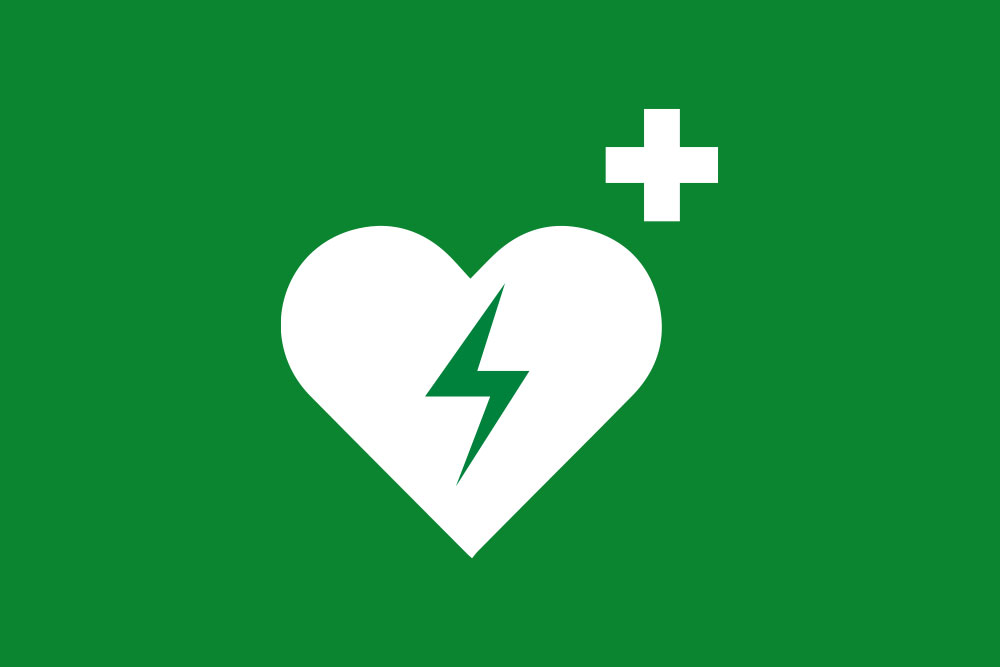
The Green Cross (ISO standard)
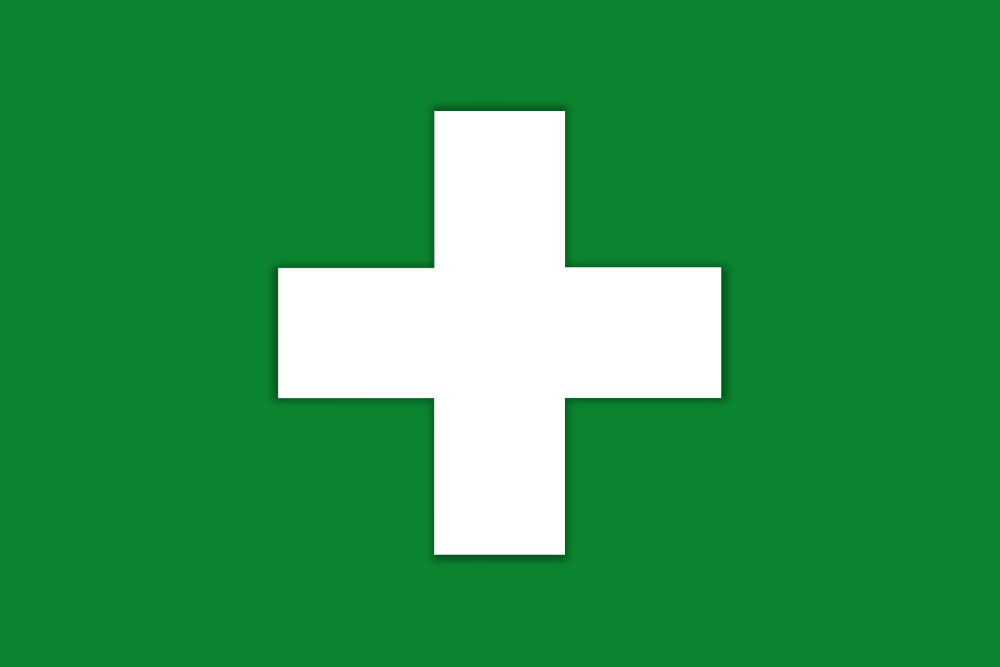
This white cross on a green background is now the worldwide standard first aid sign. Green is the ISO colour for an emergency. You’ll see it on a first aid kit and emergency exit signs. But it doesn’t stop there. This symbol can be found at eyewash stations and on defibrillators, too.
Red Cross, Crescent and Crystal
All of these symbols are red on a white background. The cross is widely recognised as a symbol of first aid and medicine. It dates back to the Geneva Convention in 1864. Back then, it was decided that countries at war should agree not to fire on medical transport and facilities. The red cross symbol was used as an identifying marker.
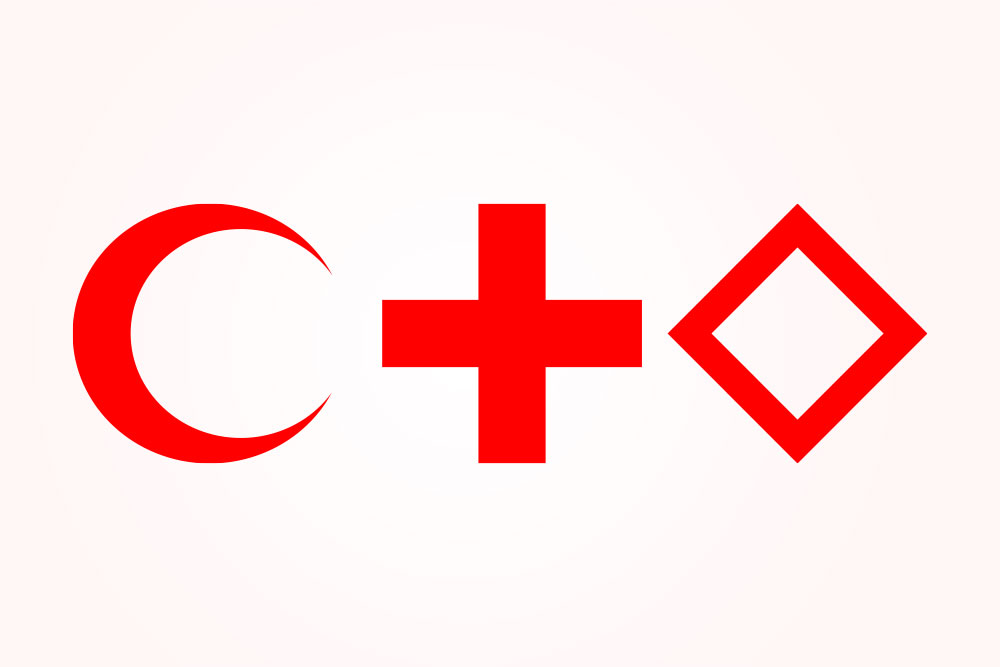
The red crescent is a take on the red cross. It is a Muslim equivalent of the Red Cross, first used by the Ottoman Empire during the Russo-Turkish War of the late 1800s. It is still used in some Islamic countries today.
Lastly, the red crystal is considered a religion-neutral version of the original Red Cross. It is used in countries like Israel.
Asclepius and Caduceus
You could argue that these two aren’t first-aid symbols but indicate something medical.
The Rod of Asclepius symbolises a staff with a snake wrapped around it. In Greek mythology, Asclepius is the god of medicine. He carried a staff with a snake twisted around it. His legacy was so great that he was even mentioned in the first Hippocratic oath (the oath taken by all doctors). This symbol can be seen on ambulances and is within the logo of the World Health Organization.
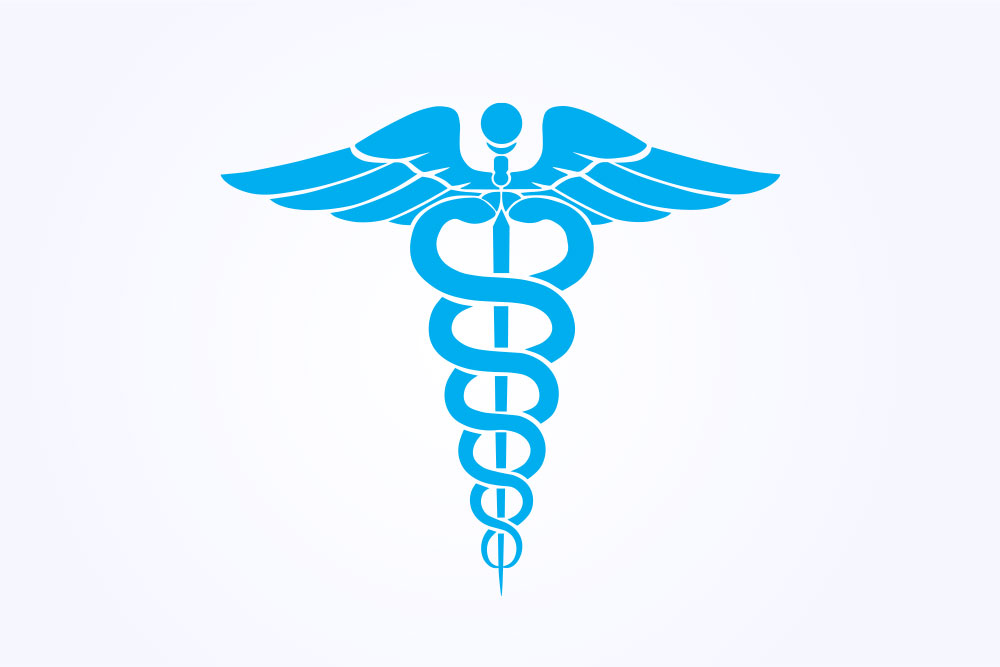
The symbol of two snakes twisted around a staff is known as Caduceus. Again, this symbol is influenced by Greek mythology. A caduceus is a staff carried by the messenger god, Hermes. In 1902, the US Army Medical Department made this their first aid symbol. Perhaps they got confused with the Rod of Asclepius, but regardless, it stuck, and you’ll see this ‘first aid’ symbol across America today.
Other First Aid Symbols:
The Star of Life
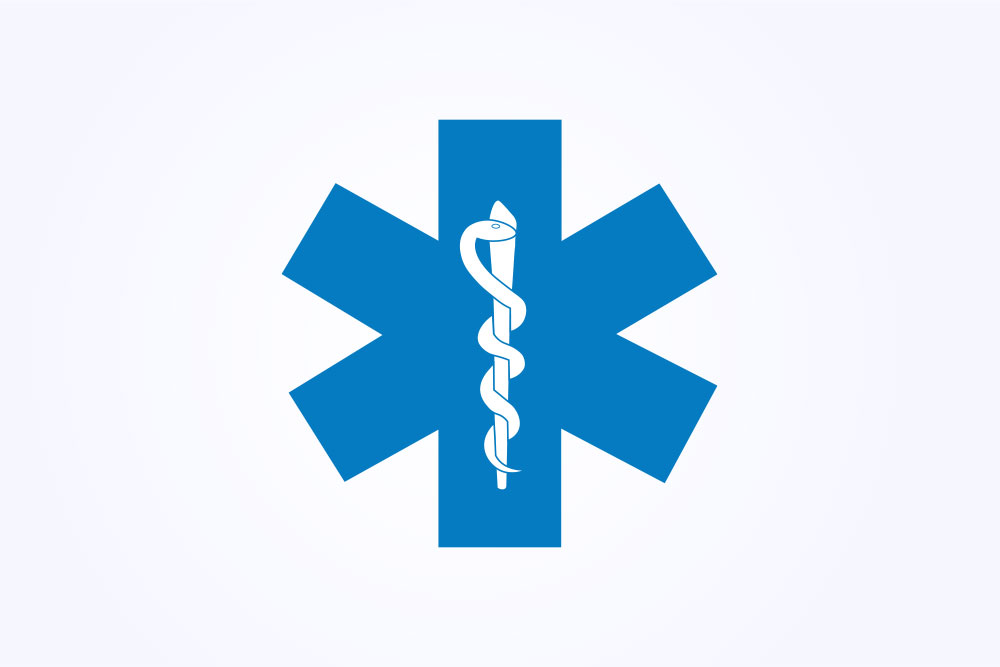
The Star of Life features the Rod of Asclepius inside a blue, six-pointed star. This symbol was created in 1973 by the U.S. National Highway Traffic Safety Administration. It came to be after the American National Red Cross complained about how the existing and commonly used Ohama orange cross on a white background looked too similar to the Red Cross symbol.
The Maltese Cross
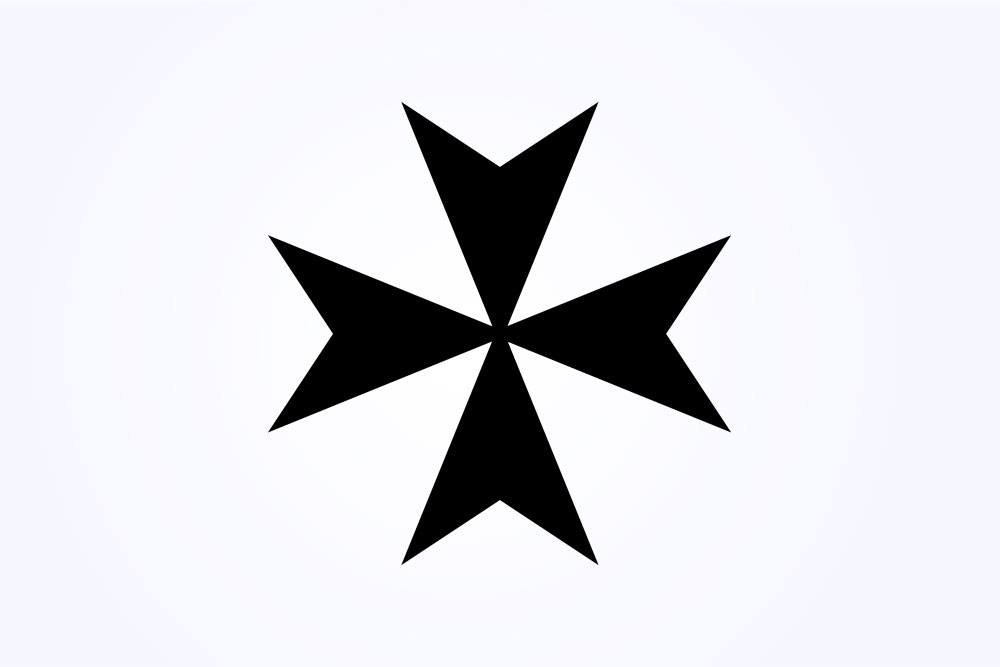
The Maltese Cross, a black cross on a white background, is a symbol of protection used in places like Canada, Asia and Africa. This symbol is most commonly associated with the Knights Hospitallers, also known as the Knights of Malta. In the early 12th century, they formed in a district of Jerusalem that was dedicated to John the Baptist. Their focus was to aid sick and poor pilgrims to the Holy Land.
White Cross on a Red Background
A white cross on a red background is sometimes used to indicate first aid stations or kits, but it’s a lesser-used alternative to the ISO-approved white cross on green. The white-on-red colour scheme can cause confusion, as it closely resembles the Swiss flag and the emblem of the International Red Cross, both of which have entirely different meanings.

White Cross on a Blue Background
A white cross on a blue background is also occasionally used to represent first aid services, but it’s not a globally recognised standard. Blue is often associated with healthcare, which is why this sign appears in some hospitals and public facilities. However, it doesn’t hold the same universal recognition as other first aid symbols.
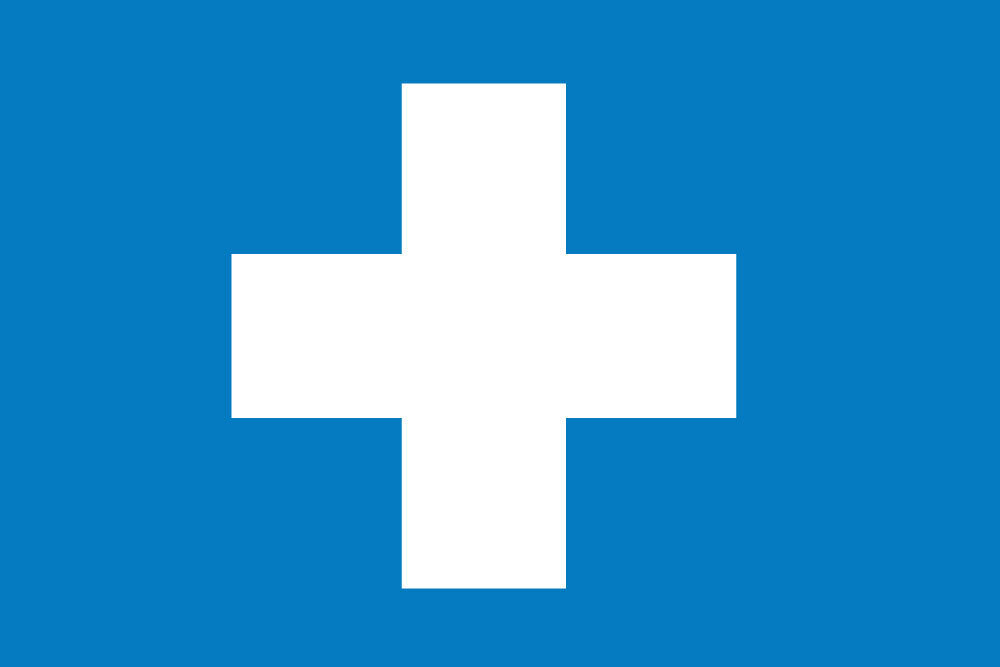
Green Cross with the Rod of Asclepius or Caduceus
Some places in Europe and Latin America may use a green cross paired with the Rod of Asclepius or Caduceus to represent a first aid sign. These ancient symbols have long been linked to medicine and healing, so they are sometimes paired with a green cross to indicate first aid locations in pharmacies, hospitals and other healthcare settings.
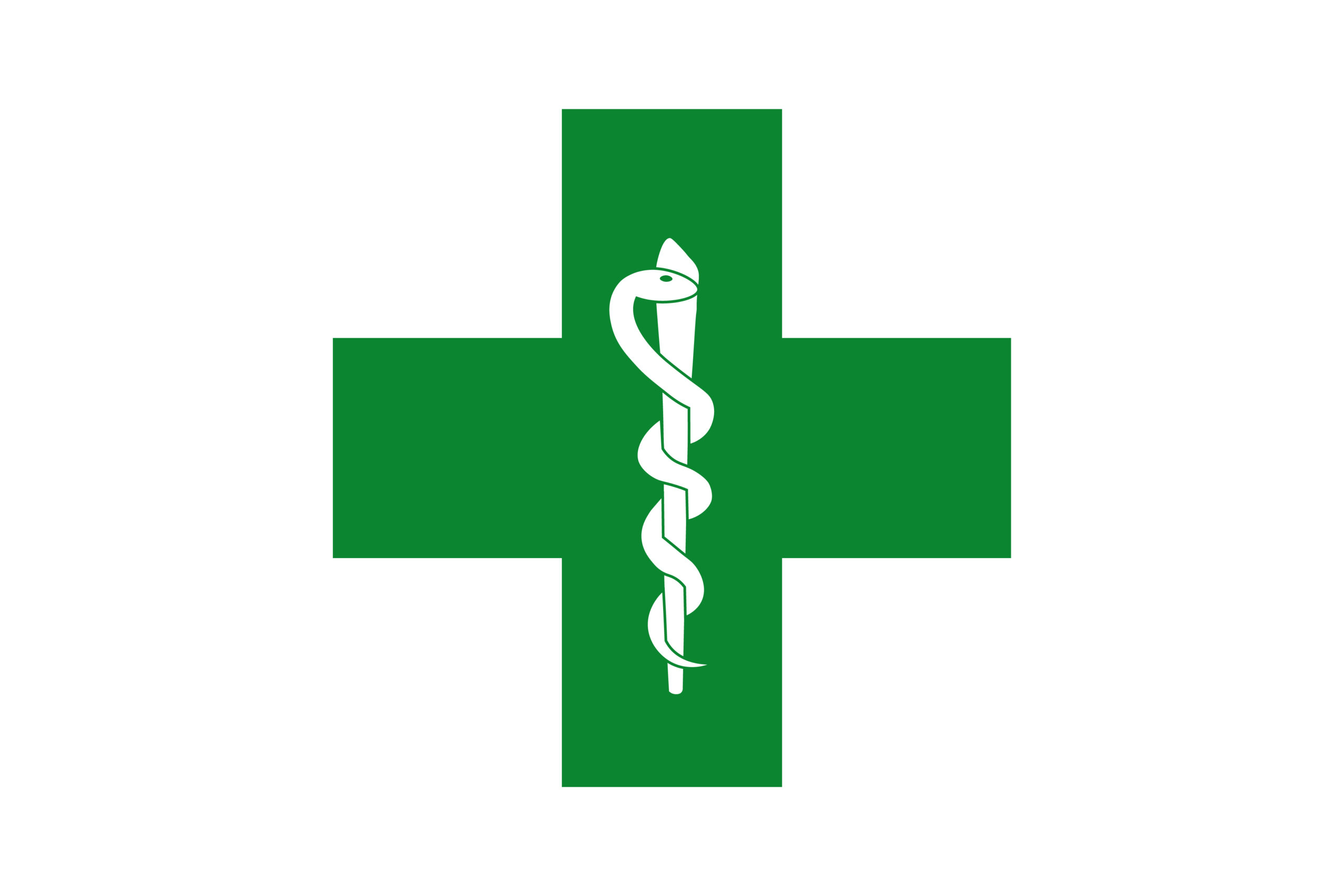
First Aid Text Signs
Text-based first aid signs are widely used in workplaces and schools. They feature the words “First Aid” in the local language, making them simple and easy to read. These signs help people find first aid kits and assistance points quickly without needing to interpret symbols.

First Aid Is More Than Signs & Symbols
Now you know about the different first aid signs and symbols, why not brush up on your first aid knowledge? The First Aid for Work course is packed with more than just information on how to give first aid. It’s also an excellent opportunity to learn why first aid is essential and to better understand the role of a first aider. And if there’s ever a course that helps you save a life in and out of work, this is it.




















































































































































































































































































































































































































































































































































































































































































































































